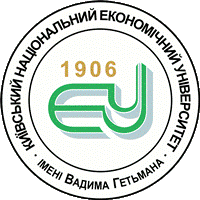«НАПЕРЕДОДНІ ТА ПІСЛЯ НІСІБІСА»: МІЖНАРОДНО-ПРАВОВІ ОСОБЛИВОСТІ РИМСЬКО-ІРАНСЬКОЇ МИРНОЇ УГОДИ 363 РОКУ
DOI:
https://doi.org/10.32782/klj/2024.1.1Ключові слова:
міжнародна правосуб’єктність, Нісібіський мирний договір, Римська імперія, Сасанід- ський Ераншахр, Велика Вірменія, історичні права, політичні права, право вічного володіння, депортація.Анотація
Анотація. Стаття презентує результати комплексного текстологічного та наративного дослідження Нісібіської мирної угоди 363 року. Договір уклали між собою повноважні представники Римської імперії та Сасанідського Ірану. Він був результатом невдалої військової кампанії римлян, що проводилася впродовж 363 року. Ідеологічною основою для походу римських сил у межі Персії стало прагнення підкорити значну частину іранських земель. Прикладом наслідування в римських аристократичних колах вважався Александр Македонський (336-323 рр. до н. е.). Отже, Імператорський Рим ставив собі на меті повний і безповоротний розгром Династії Сасанідів (на кшталт знищення Династії Ахеменідів Александром у 330 р. до н. е.). Зрештою, імператор Юліан Відступник (361-363) зумів наблизитися до перської столиці (місто Ктесифон), але був убитий. Як наслідок, потужний експедиційний римський корпус відступив і потрапив у пастку основних сил персів. Військова рада швидко обрала нового імператора. Однак, саме Іовіан (363-364) погодив із правителем Ірану Шапуром ІІ (308-380) ключові умови римсько-перських домовленостей. По-перше, Римська імперія відмовлялася від «історичних прав» на володіння в Месопотамії. По-друге, персам передавалися ключові фортифікаційні пункти прикордонної лінії, що суттєво послаблювало оборонну систему імперії. По-третє, угода передбачала депортацію греко-римського населення з Месопотамії до Сирії. Їх мали замінити іранські колоністи. По-четверте, римляни передавали Велику Вірменію в залежність від Ірану терміном на тридцять років. Крім того, римський імператор поклявся не допомагати Вірменії у разі усного чи письмового звернення її базилевса до офіційного Константинополя. Стаття характеризує ключову дискусію між перськими та римськими інтелектуалами з приводу терміну вірменської залежності від Персії. Змальовується ставлення римських коментаторів до факту та обставин укладення угоди. Підкреслюються хитрощі, до яких вдався імператор Іовіан у випадку з тлумаченням юридичного статусу Великої Вірменії. При цьому, Нісібіський мирний договір 363 року виявився ключовим документом для історії міжнародного права IV століття. Наприкінці конкретизуються наслідки прийнятих умов для зовнішньополітичного курсу імператорів-правонаступників.
Посилання
Мельник В. М. Нісібіський мирний договір 298 року: питання міжнародної правосуб’єктності у відносинах Римської імперії та Сасанідського Ірану. // Юридичний вісник. 2023. № 4. С. 14-22.
Dignas Beate, Winter Engelbert. Rome and Persia in Late Antiquity. Neighbours and Rivals. Cambridge-New York: Cambridge University Press, 2007. XVI+347 pp.
The Roman Eastern Frontier and the Persian Wars AD 226-363. A Documentary History. Ed. by Michael H. Dodgeon, Samuel N. C. Lieu. London-New York: Routledge, 1994. XXIII+430 pp.
Fisher Greg. Between Empires: Arabs, Romans, and Sasanians in Late Antiquity. Oxford Classical Monographs. Oxford: Oxford University Press, 2011. XVI+254 pp.
Chrysos Evangelos. Räumung und Aufgabe von Reichsterritorien. Der Vertrag von 363. // Bonner Jahrbücher. 1993. Bd. 193. S. 165-202.
Ammianus Marcellinus. Das römische Weltreich vor dem Untergang. / Sämtliche erhaltene Bücher. Übersetzt von Otto Veh. Eingeleitet und erläutert von Gerhard Wirth. Zürich und München: Artemis, Die Bibliohek der Alten Welt, 1974. XXX+950 s.
Potter David S. The Roman Empire at Bay: AD 180-395. New York: Routledge, 2004. XXII+762 pp.
The Ecclesiastical History of Socrates, surnamed Scholasticus, or the Advocate. London: H. Bohn, 1853. XX+475 pp.
Cuneo Paola Ombretta. La legislazione di Costantino II, Costanzo II e Costante (337-361). Milano: Giuffrè, 1997. CXVIII+518 pp.
Emperor and Author: The Writings of Julian the Apostate. / Edited by Nicholas Baker-Brian and Shaun Tougher. Swansea: Classical Press of Wales, 2012. XXI+384 pp.
Pellizzari Andrea. Maestro di retorica, maestro di vita: le lettere teodosiane di Libanio di Antiochia. Roma: L’Erma di Bretschneider, 2017. 584 pp.
Chaniotis Angelos. Age of Conquests: The Greek World from Alexander to Hadrian. London and Cambridge MA: Harvard University Press, 2018. XXII+446 pp.
Zosimus. New History. / Editor & Translator: Ronald T. Ridley. Canberra: Australian Association for Byzantine Studies, University of Sydney, 1982. XV+263 pp.
Ta’rikh al-rusul wa’l-mulnk: The History of Al-Ṭabarī. Vol. V. The Sāsānids, the Byzantines, the Lakmids, and Yemen. Translated and annotated by C. E. Bosworth. Albany: State University of New York Press, Columbia University Center for Iranian Studies, 1999. XXXV+458 pp.
де Фріс Вільгельм. Рим і Патріярхати Сходу. / Переклад з німецької О. Конкевича, С. Матіяш. Львів: Видавництво Українського католицького університету, 2015. 416 с.
Smith Kyle. Constantine and the Captive Christians of Persia: Martyrdom and Religious Identity in Late Antiquity. Berkeley: University of California Press, 2016. XXII+232 pp.
Southern Patricia. The Roman Empire from Severus to Constantine. London: Routledge, 2001. XVI+501 pp.
Schachermeyr Fritz. Alexander der Grosse. Das Problem seiner Persönlichkeit und seines Wirkens. / Österreichische Akademie der Wissenschaften, Philosophisch-Historische Klasse. Sitzungsberichte. Band 285. Wien: Verlag der Österreichischen Akademie der Wissenschaften, 1973. 728 s.
Toumanoff Cyril. Studies in Christian Caucasian History. Washington D.C.: Georgetown University Press, 1963. 601 pp.
Stathakopoulos Dionysios. A Short History of the Byzantine Empire. London: I. B. Tauris, 2021. 256 pp.
Heather Peter. The Restoration of Rome: Barbarian Popes and Imperial Pretenders. London: Macmillan, 2013. XVIII+470 pp.+XVI ill.







